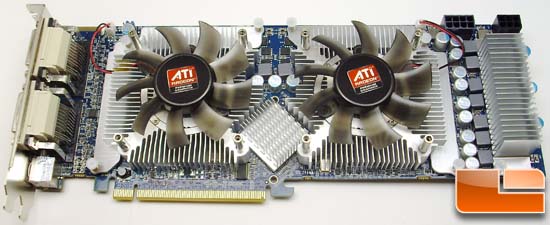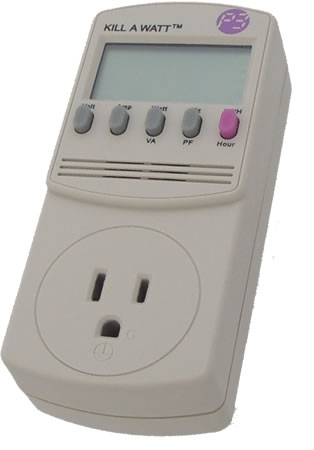Sapphire Radeon HD 4850 X2 Video Card Review
Temperature and Power Consumption

With dual GPUs on a single PCB, it might be expected that the Sapphire HD 4850 X2 might run a bit warm… but that just wasn’t the case. As seen in the photo above, the front of the printed circuit board is almost completely covered with heatsinks. The combination of the heatsinks, the dual ATI labeled fans, and the aluminum shroud really do a nice job keeping this card running cool, even under full load.
Running at idle with the fan on Auto, the card ran around 39-40 deg C with a fan speed of 3% and fan noise was kept to a whisper. Loading the card, we saw the fan speed up to 36% but the temperature never went over 66 deg. C while the fans stayed at a completely acceptable level.
Out of curiosity, we switched over to manual fan control and kicked the fan speed to 50% on both fans while at idle. We observed the temps drop to about 36 deg C, but also noticed a big increase in fan noise. Bumping the fans to 100% at idle, the temp inched down another tick to 35 deg C, but at this point, the fan noise was unbearable. When pushing the fan speeds to 50% and 100% under load, the temps decreased to 65 deg C and 62 deg C respectively, but again as fan speed increased, fan noise went with it.

At idle, the card steps down from stock clocks of 625MHz Core and 993MHz Memory to 500 and 750MHz, respectively. Not only does this help the life of the card by keeping it running cooler, but it also helps to conserve energy when you are taking a break from the battlefield.
To test the level of power consumption, we plugged the system into our P3 Kill-A-Watt Electrical Load Meter. Once connected, we let the test system idle at the desktop for 15 minutes at both stock and overclocked speeds and took the highest readings. To test draw under load, we fired up a full test with 3D Mark Vantage at both stock and overclocked speeds and took the highest readings.
At stock clock speeds, we recorded an idle draw of 168 watts and a load draw of 323 watts.
At overclocked speeds of 700MHz Core and 1200MHz Memory, we recorded an idle draw of 172 watts and a load draw of 348 watts.

Comments are closed.